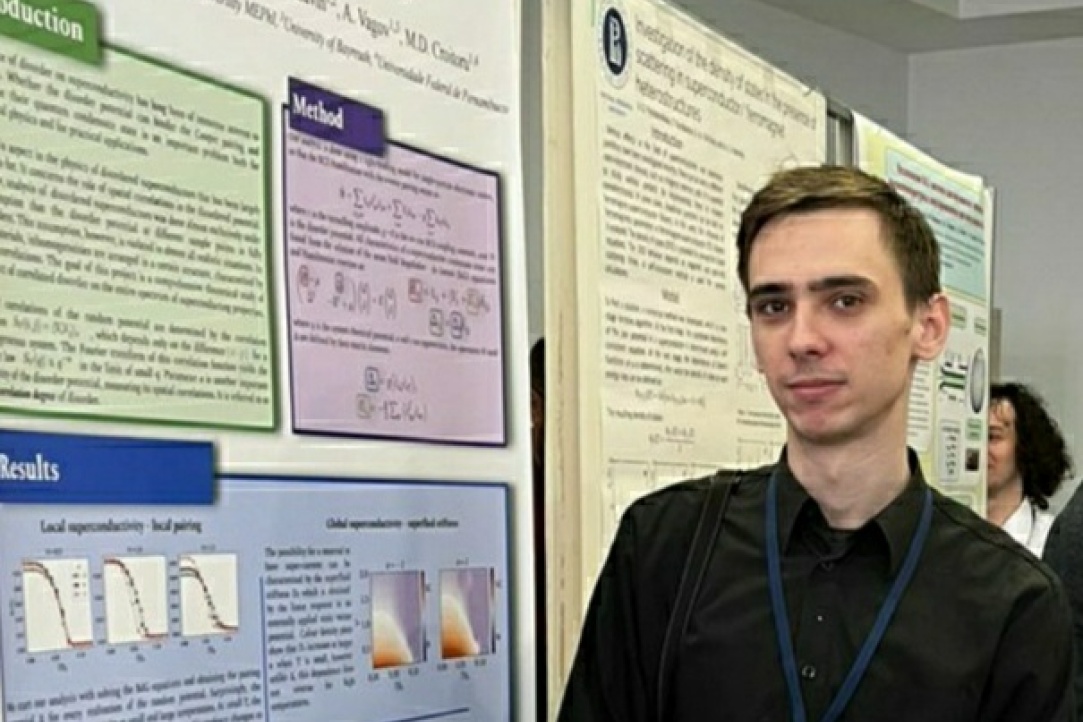Research assistants of the Center presented poster presentations at the International Symposium "Nanophysics and Nanoelectronics" in Nizhny Novgorod
Their presentation "Correlated disorder - a way to improve the characteristics of superconductors", has theoretically justified the approach which allows to significantly improve superconducting characteristics by using materials with spatially correlated disorder.

Recent achievements in the field of two-dimensional materials have opened new horizons in the physics of disordered materials and superconductivity. The presence of impurities in superconducting materials, on the one hand, enhances paired correlations of charge carriers, enhancing superconductivity, and on the other hand, it can enhance phase fluctuations, which globally suppresses it. Therefore, it should be expected that there is an optimal degree of inhomogeneity of the material at which the superconductivity gain and, consequently, its critical temperature are maximal.
Random impurities and defects can be considered as a tool for controlling the superconducting characteristics of materials and as a design element for creating superconductors with the desired functionality. Until now, theoretical studies of superconductivity have been limited to disorder models describing the spatially uncorrelated distribution of impurities. However, in real systems, the distribution of impurities is almost never completely random. Inhomogeneities are often structured and characterized by long-range spatial correlations.
In our work, the influence of such long-range correlations on the superconducting state has been studied. The results show that they lead to the fact that superconductivity becomes more stable with respect to the force of disorder (see Figure).
The obtained results will open new possibilities for achieving qualitatively different superconductivity regimes by changing the degree of impurity correlation. This will improve the superconducting properties of materials and give them new functionality for future technologies, for example, in terms of dependence on applied magnetic fields and currents.
Senior Research Fellow
Лукьянов Александр Евгеньевич
Research Assistant
Неверов Вячеслав Дмитриевич
Research Assistant
